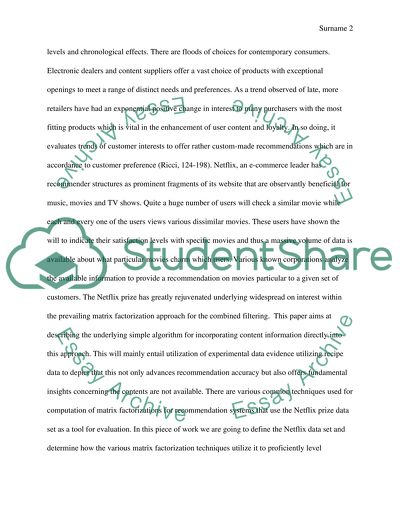Cite this document
(“Matrix Factorization Techniques for Recommendation Systems (Netflix Research Paper”, n.d.)
Matrix Factorization Techniques for Recommendation Systems (Netflix Research Paper. Retrieved from https://studentshare.org/mathematics/1636533-matrix-factorization-techniques-for-recommendation-systems-netflix-prize
Matrix Factorization Techniques for Recommendation Systems (Netflix Research Paper. Retrieved from https://studentshare.org/mathematics/1636533-matrix-factorization-techniques-for-recommendation-systems-netflix-prize
(Matrix Factorization Techniques for Recommendation Systems (Netflix Research Paper)
Matrix Factorization Techniques for Recommendation Systems (Netflix Research Paper. https://studentshare.org/mathematics/1636533-matrix-factorization-techniques-for-recommendation-systems-netflix-prize.
Matrix Factorization Techniques for Recommendation Systems (Netflix Research Paper. https://studentshare.org/mathematics/1636533-matrix-factorization-techniques-for-recommendation-systems-netflix-prize.
“Matrix Factorization Techniques for Recommendation Systems (Netflix Research Paper”, n.d. https://studentshare.org/mathematics/1636533-matrix-factorization-techniques-for-recommendation-systems-netflix-prize.


